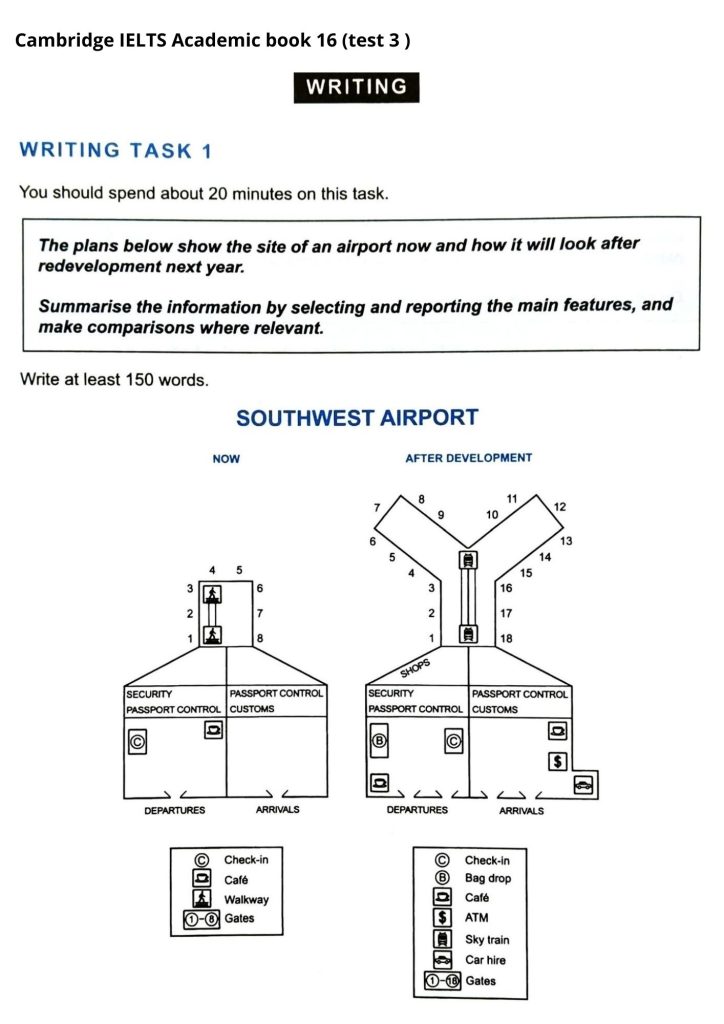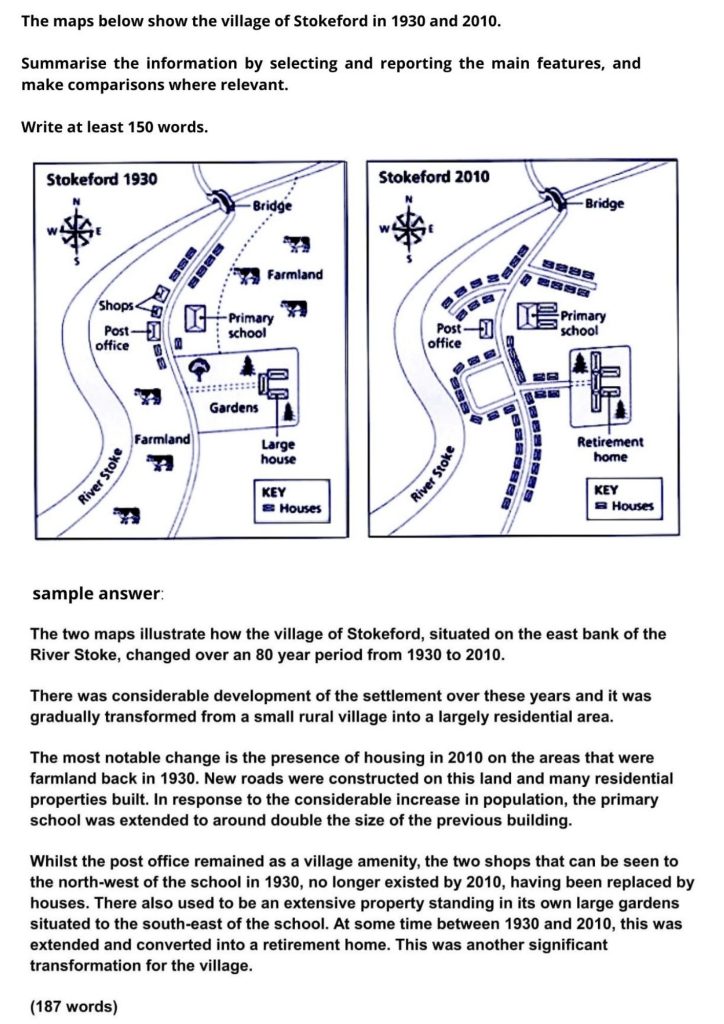IELTS Academic Writing Task 1 Map Diagram
IELTS map questions are the easiest to answer. There are no numbers to analyse, just 2 or 3 maps to compare. Very occasionally, there might only be a single map, but this is rare.
The maps will be of the same location at different times. This could be in the past, the present time or a plan for a proposed development in the future. You are required to write about the changes you see between the maps.
There are 5 steps to writing a high-scoring IELTS map essay:
1) Analyse the question
2) Identify the main features
3) Write an introduction
4) Write an overview
5) Write the details paragraphs
Ideally, your essay should have 4 paragraphs:
Paragraph 1 – Introduction
Paragraph 2 – Overview
Paragraph 3 – 1st main feature
Paragraph 4 – 2nd main feature
Step 1 – Analyse the question
The format of every Academic Task 1 question is the same
Every question consists of:
- Sentence 1 – A brief description of the graphic
- Sentence 2 – The instructions
- The graphic – map, chart, graph, table, etc.
Sentence 2 tells you what you have to do.
You must do 3 things:
- Select the main features.
- Write about the main features.
- Compare the main features.
All three tasks refer to the ‘main features’ of the graphic. You do not have to write about everything. Just pick out 2 or 3 key features and you’ll have plenty to write about.
Step 2 – Identify the Main Features
All you are looking for are the main features. Start with the earliest map. Identify the key features and look to see how they have changed in the later map, and again in the final map if there are three.
Here are some useful questions to ask?
1) What time periods are shown?
Are the maps of past, present or future situations? This is important to note because it will determine whether you write your essay using past, present or future tenses.
The two maps in our practice IELTS map question show the village of Stokeford at two different times in the past. This immediately tells us that we will need to use the past tense in our essay.
2) What are the main differences between the maps?
What features have disappeared? What new features are in their place?
3) What features have remained the same over the time period?
Although the location on the maps will have undergone major development, some features may remain unchanged.
Many maps will contain far more changes than our sample maps and the changes may be more complex. In such cases, you won’t have time to write about all of them and will need to select just 2 or 3 main features to focus on.
The key features you select will be the starting point for your IELTS map essay. You will then go on to add more detail later. However, with just 20 minutes allowed for Task 1, and a requirement of only 150 words, you won’t be able to include many details.
We’re now ready to begin writing our essay. Here’s a reminder of the 4 part structure we’re going to use.
Paragraph 1 – Introduction
Paragraph 2 – Overview
Paragraph 3 – 1st main feature
Paragraph 4 – 2nd main feature
Step 3 – Write an Introduction
In the introduction, you should simply paraphrase the question, that is, say the same thing in a different way. You can do this by using synonyms and changing the sentence structure
Step 4 – Write an Overview (Paragraph 2)
In the second paragraph, you should describe the general changes that have taken place. The detail comes later in the essay.
State the information simply. No elaborate vocabulary or grammar structures are required, just the appropriate words and correct verb tenses.
Two sentences would be better than one for the second paragraph but we’ll be getting into the detail if we say more about these maps at this point, so we’ll leave the overview as one sentence.
Step 5 – Write the 1st Detail Paragraph
Paragraphs 3 and 4 of your IELTS map essay are where you include more detailed information. In paragraph 3, you should give evidence to support your first 1or 2 key features.Step 6 – Write the 2nd Detail Paragraph
For the fourth and final paragraph, you do the same thing for your remaining key features.


